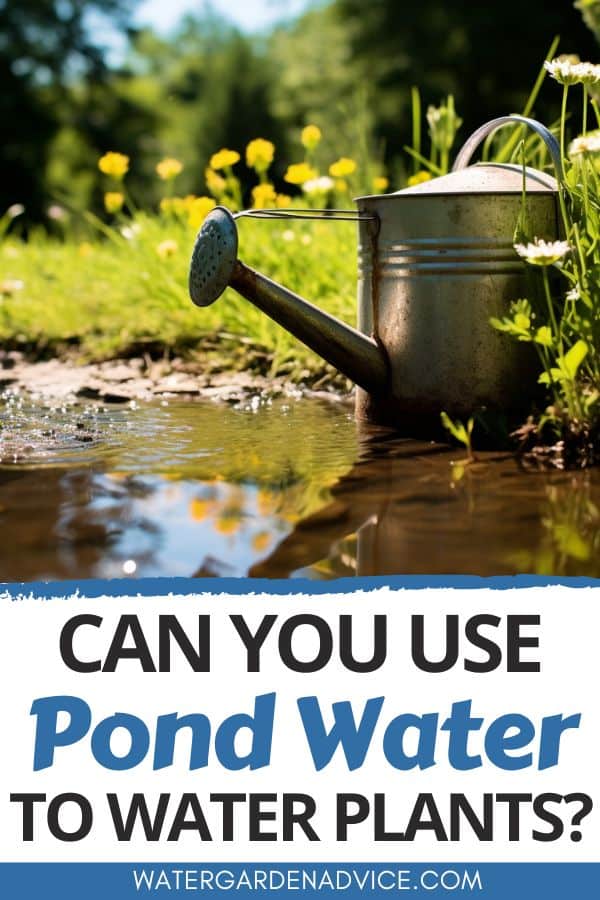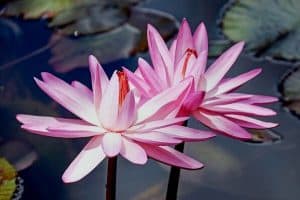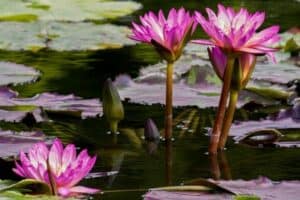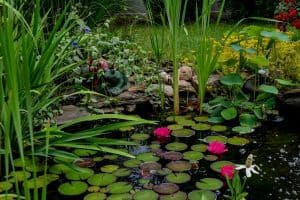Watering plants with pond water can be a tempting option for gardeners.
After all, pond water is free, abundant, and contains nutrients that can be beneficial for plants.
But there are a few things you need to know before you start using pond water to water your plants.
In this article, I’ll explore the pros and cons of using pond water for plant watering, as well as some tips on how to make the most of this natural resource without harming your plants.
This post contains affiliate links. Please read the disclosure for more info.
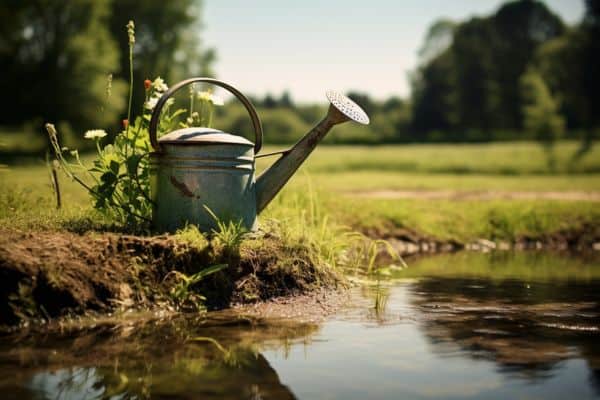
Characteristics of Pond Water
Pond water is a unique resource that can be used to nourish your plants.
It contains dissolved minerals, suspended particles, and decaying organic matter.
The quality of your pond water will vary depending on factors such as the method of filtration, local wildlife, and the pond’s depth.
You should be aware that pond water can sometimes harbor pathogens or unwanted chemicals, so it’s essential to test the water using a pond test kit before using it to water your plants.
Nutrients in Pond Water
Pond water can be a treasure trove of nutrients for your plants.
If your pond contains fish or other aquatic animals, it will have a higher concentration of nitrogenous compounds, such as nitrates, which are beneficial for plant growth.
Pond water also contains phosphorus, carbon and trace amounts of potassium, calcium, sulfur, and micronutrients including magnesium, iron and cobalt.
Decaying plant material in pond water provides nourishment to the microorganisms in the soil, which will boost your plants’ health.
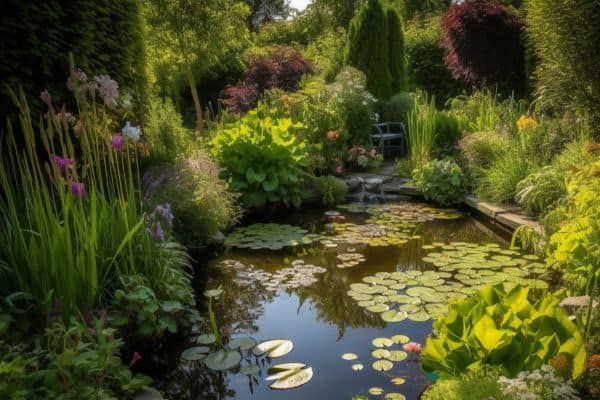
Comparing Pond Water to Tap Water
Pond water can be a great alternative to tap water for watering your plants, as it is often rich in nutrients that benefit your plants’ growth.
However, there are a few differences between the two that you should be aware of before making the switch.
Tap water contains chlorine and depending on where you live it can also contain fluoride, which can hinder plant growth.
Pond water, on the other hand, does not contain chlorine.
This can be a distinct advantage for plants since the absence of chlorine allows them to grow more vigorously.
It’s important to note, however, that not all tap water is created equal – some tap water sources may have lower chlorine levels than others.
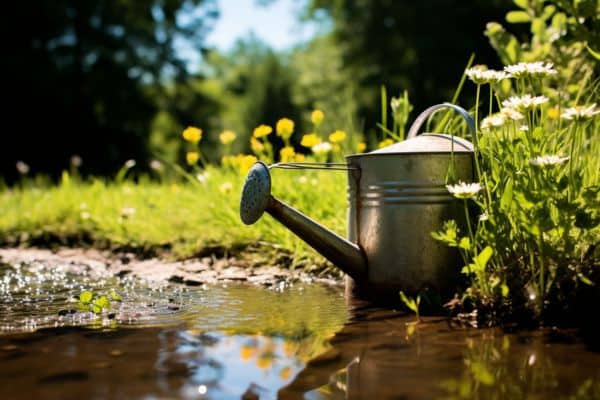
Potential Risks of Using Pond Water for Plants
Water Contaminants
When using pond water, you should be aware of potential water contaminants, such as chemicals or pollutants.
These contaminants can be detrimental to your plants’ growth and health.
To reduce this risk, consider testing the water first and treating or filtering it if necessary.
Be particularly cautious if you’ve used pesticides in the garden or in areas where rainfall runs off into the pond.
Algal Blooms
Pond water can also contain high levels of algae. Algal blooms can occur when there is an excess of nutrients in the water, particularly nitrogen and phosphorus.
When using pond water with high algae levels, you might find that it can lead to issues with your plants.
To minimize this risk, try to use pond water with low levels of algae or treat the water with a UV clarifier to remove excess algae before using the water on your plants.
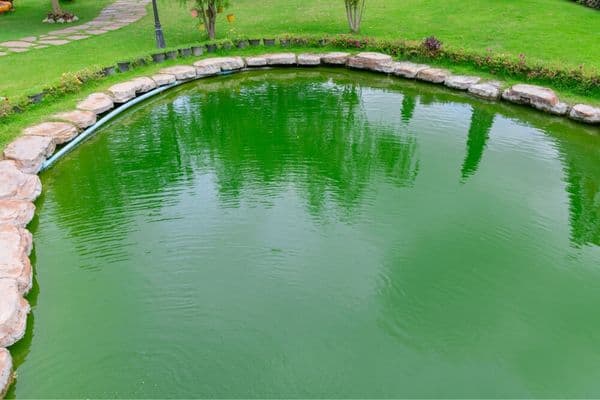
Pests and Pathogens
Pond water can also harbor pests and pathogens, which may harm your plants or introduce new diseases into your garden.
Bacteria from bird droppings, insects, snails or wild animals like raccoons or feral cats can carry fungal infections, parasites, or viruses that can proliferate in the pond water and harm your plants.
If you don’t have a bubbler, fountain or another aeration source, the pond water can also harbor harmful non-aerobic bacteria, which you don’t want to spread to your plants.
Some plant diseases can also spread through water, so using pond water increases the risk of infecting your plants.
Best Practices for Using Pond Water
Filtering Pond Water
Before using pond water on your plants, it’s essential to filter it to remove any harmful microbes, debris, or contaminants.
One way to do this is by using mechanical filters or bio-filters, which can help separate solid particles from the water.
You can also use a UV clarifier to remove harmful bacteria and algae present in the water.
Keeping your pond clean and well-maintained is essential to ensure the water is safe for your plants.
Maintain a healthy ecosystem, including fish and aquatic plants, to promote a balanced nutrient content in the water.
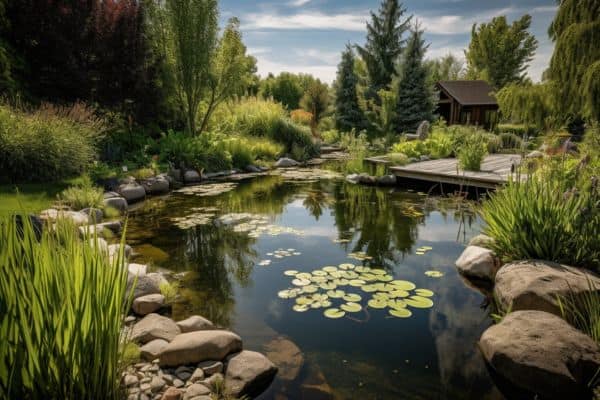
Benefits of Using Pond Water
Conserving Water Resources
By using pond water to water your plants, you’re taking a step towards conserving precious water resources.
This is especially important in areas where water scarcity is a growing concern.
When you use pond water to water your plants, you help to reduce the demand on municipal water supplies, which can lead to lower water bills for you.
Natural Fertilization
Pond water can serve as a great source of natural fertilization for your plants because it contains dissolved minerals and nitrates essential for healthy growth.
The decaying plant material found in pond water also nourishes the microorganisms in the soil, which can promote better plant growth.
This means that using pond water can potentially reduce your reliance on synthetic fertilizers, leading to a more natural, organic, and eco-friendly approach to gardening.
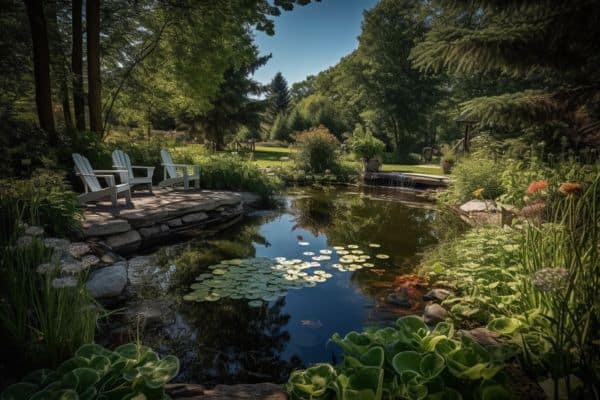
Using Pond Water to Water Lawn
Watering your lawn with pond water is a great idea, especially if you’re doing a water change in the pond where you’ll have a lot of excess water to get rid of.
If you have a small pond you can use a bucket or watering can to collect pond water, being careful not to disturb the pond’s ecosystem.
For larger ponds you can use a pump to remove up to 50% of the pond water.
Apply the pond water evenly across your lawn, making sure not to flood the area.
The nutrients in the pond water will help to nourish your lawn and support its growth.
Keep an eye on your lawn’s appearance and growth after using the pond water.
If you notice discoloration or other signs of stress, it may be necessary to adjust your watering practices or treat the pond water further before using it again for watering.
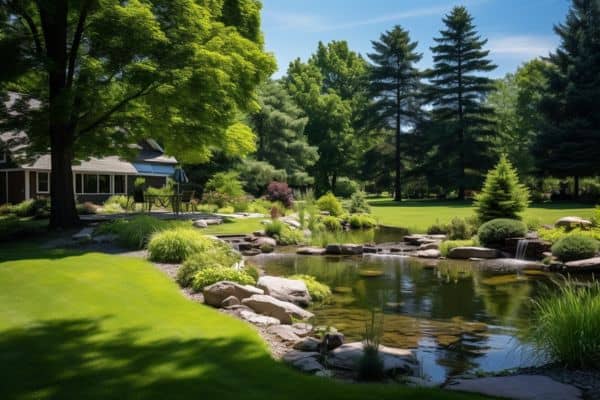
Can you use pond water to water indoor plants?
Using pond water to water indoor plants is not a good idea because pond water contains a high level of nutrients and minerals that can be harmful to indoor plants.
Pond water can also contain harmful bacteria and parasites that can harm indoor plants and cause them to become diseased. [1]
It’s best to use clean, filtered water to water your indoor plants to ensure their health and longevity.
RELATED ARTICLES
- How to Keep Pond Water Cool in Summer
- How To Make Your Pond Water Clear Blue
- How to Reduce Pond Water Evaporation
So there are my tips for using pond water to water plants.
By understanding the benefits and potential drawbacks of using pond water, you can give your plants the care they need using a natural and environmentally-friendly alternative to tap water.
Are you on Pinterest? I have boards dedicated to Garden Ponds and Pond Maintenance that you may find interesting.
